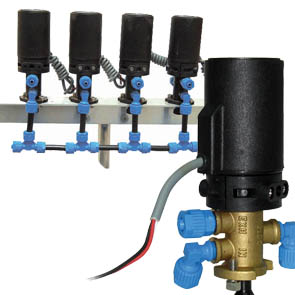Since man invented the wheel, he has been on a relentless march towards the future. He has utilized nature’s resources to invent new equipments and methods to make life an application of scientific techniques.
As a result of man’s incessant need for knowledge we now lead lives aided with numerous technological gadgets. And has also tried his hand at controlling the elements of nature. He has created dams to control and harness the energy of rivers. One more such application of control is the use of valves. Here we discuss a specific type called the solenoid valves.
How solenoid valves are made
A solenoid valve is basically an electromagnetic valve and it is used with the help of liquid or gas.
The valve is controlled by the use of electric current passed through a solenoid. A solenoid is an electric coil made of conducting material in the form of a helix. The solenoid valve has two main parts : the solenoid and the valve. The solenoid acts as an electromagnet.
When electricity is passed through it, it converts electrical energy into mechanical energy which makes the valve open or close. Solenoid valves are available in two types. Firstly, the two-port valve which offers only one direction of fluid flow. The flow can only turned on/off in this kind of valve. Secondly, the three-port valve the outflow of the fluid can be switched between two available directions.
Multiple solenoids mounted on specific manifolds may also be used to offer greater control of movement. Seals used in solenoid valves may be made of metal or of rubber. These may further be connected to electrical interfaces for ease of control. A mechanized spring may be used to hold the valve open or closed when it is inactive.
Types and uses of solenoid valves
In fluidics, solenoid valves are the most frequently used control elements. They are used fluid power pneumatics and also in hydraulic systems. They are used to control cylinders, for fluid powered motorized equipments or even certain larger industrial valves.
Solenoid valves with automatic controllers are used in automated irrigation sprinkler systems. Water input into domestic appliances like washing machines and dishwashers is also controlled by solenoid valves. Even in the paintball industry these valves are used to control the flow of propellants. Solenoids are also used in pharmacology experiments, especially as patch clamps. Solenoid valves are also available in a variation called the pilot valve which requires low power to be kept open once activated. Solenoids have vast application area.
They shut off, mix, distribute, dose and release fluids. They are highly reliable, have long shelf lives, offer fast and safe switching, need low power to operate and are pretty compact. Hence they are of great use in today’s world.
